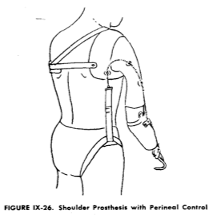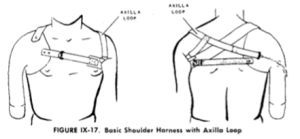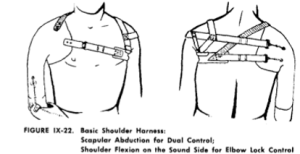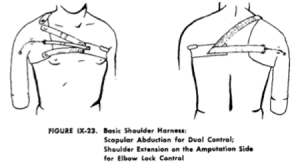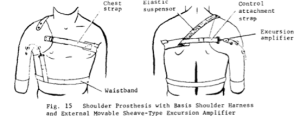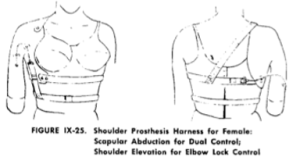15e. Shoulder Disarticulation Harness
The shoulder disarticulation prosthesis can be designed to provide substitutes for the lost functions of the hand, wrist, elbow and shoulder joint. The harness must be designed to:
- capture suspension symmetrically across the right and left sides of the body, distribute the load and maintain prosthetic stability through various ROM
- transmit excursion and force (inconspicuously) from the individuals body motion to the prosthesis.
- * The suspension force vector needs to be different from the control/operation force vectors.
- allow independent donning, doffing, and laundering
- be comfortable and durable.
If the patient cannot successfully operate the prosthesis with the basic harness, three variations may be helpful:
- Addition of an axilla loop
- Addition of a shoulder sling with an axilla loop
- Addition of an excursion amplifier
Basic Shoulder Harness with Axilla loop
|
Basic Shoulder Harness with axilla loop and shoulder sling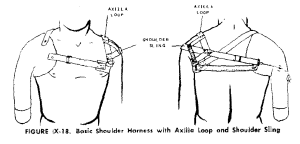 |
| Basic Shoulder Harness with two cables (unsure how they separate control between the two cables)
|
| Basic Shoulder Harness with two cables
|
| The waist band has a strap that is connected to the elbow lock control cable
|
For females
|
Be creative!?!
